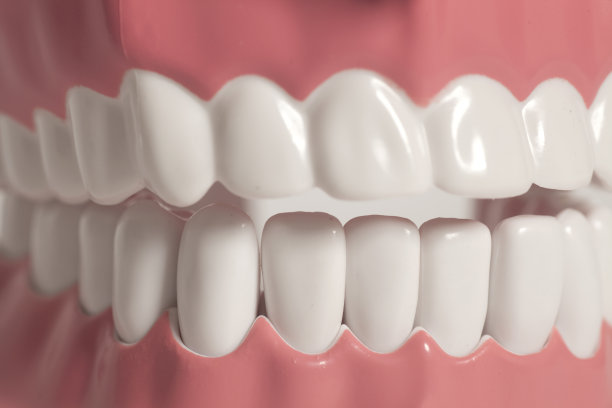Revolutionizing Smiles with Dental Implant Treatment Innovations for a Confident Future in Oral Health Care
Summary: Dental implant treatment has transformed the landscape of oral health care, offering innovative solutions that enhance both functionality and aesthetics. This article explores the four key innovations in dental implants: advancements in technology, improved materials, personalized treatment plans, and the significance of patient education. Each aspect highlights how these innovations contribute to achieving confident smiles and overall oral health. Ultimately, these revolutionary approaches not only address individual dental needs but also pave the way for a brighter future in dental care, making high-quality implant treatments accessible and effective for everyone seeking enhanced oral well-being.
1. Advancements in Dental Implant Technology

The field of dental implants has seen remarkable technological advancements that significantly enhance the procedures effectiveness and efficiency. One of the most notable innovations includes computer-guided implant surgery. This cutting-edge technology allows for precise placement of implants, resulting in increased success rates and faster recovery times. By utilizing 3D imaging and planning software, dentists can visualize the patients jaw structure accurately, allowing them to determine the ideal positioning of each implant.
Another technology revolutionizing dental implants is the use of robotic-assisted surgery. These systems provide real-time feedback and precision, minimizing human error during the procedure. The integration of robotics not only increases accuracy but also ensures that the procedure can be completed in less time, bringing forth a new level of comfort for patients.
Finally, advancements in digital platforms have transformed traditional dental consultations. Telehealth options allow dentists to assess patients remotely and provide treatment plans without the need for in-person visits. This innovation expands access to quality dental care while maintaining patient safety and convenience.
2. Improved Materials in Implant Procedures
The materials used in dental implants have evolved dramatically, contributing to their success and longevity. Titanium remains the gold standard due to its biocompatibility and durability; however, researchers are exploring alternative materials. Zirconia, for instance, is gaining popularity as a ceramic option that offers aesthetic benefits along with robust performance. Its white appearance is ideal for patients seeking a more natural look in their dental work, especially for front-facing implants.
Nanotechnology has also influenced the materials used in implants. By incorporating nano-coatings, manufacturers can enhance the surface properties of implants, making them more conducive to osseointegration—the process where the implant fuses with the bone. This improvement not only increases the stability of the implant but also accelerates the healing process.
Furthermore, bioactive materials are being developed to promote bone growth. These materials react chemically with the surrounding tissue, stimulating natural healing and integration with the implant, leading to higher success rates and improving overall outcomes for patients.
3. Personalized Treatment Plans for Every Patient
Every patients oral health needs are unique, which is why personalized treatment plans in dental implantology are imperative. Dental professionals now employ advanced diagnostic tools to assess each patient’s specific condition accurately. By analyzing factors such as bone density, gum health, and overall oral hygiene, dentists can customize treatment to suit each individuals requirements.
Moreover, personalized plans take into account the patient’s lifestyle and preferences. For some, this may involve discussing different implant types or alternative treatments, while for others, the emphasis may be on post-operative care and recovery strategies. Such customized approaches foster better communication between dentists and patients, ensuring that expectations are managed and met throughout the dental implant journey.
In addition, advancements in software technologies enable dentists to create comprehensive visual aids. These can help patients understand their treatment pathways, making the process more transparent and less intimidating. This emphasis on individualized care strengthens the dentist-patient relationship, promoting confidence in the treatment process.
4. The Role of Patient Education in Oral Health
Patient education plays a crucial role in the success of dental implant treatments. The more informed the patient is about the procedure, the risks, and the post-operative care required, the better their chances of achieving successful outcomes. Educational initiatives are increasingly being integrated into dental practices, where practitioners take the time to explain the intricacies of the implant process thoroughly.
Additionally, clear communication around the benefits and limitations of dental implants empowers patients to make informed decisions regarding their oral health. This proactive approach enables patients to engage more actively in their treatment plans, enhancing their confidence and satisfaction.
Furthermore, online resources, webinars, and support groups provide patients with ongoing access to information and community support. These platforms facilitate discussions and sharing of experiences, creating a more interactive learning environment that benefits all individuals considering dental implants.
Summary:
In conclusion, the realm of dental implant treatment is undergoing a transformation, characterized by technological advancements, improved materials, personalized approaches, and robust patient education. These innovations collectively contribute to revolutionizing smiles and instilling a sense of confidence in oral health care. As dental professionals continue to embrace these developments, patients can expect a more comfortable, effective, and successful journey toward achieving their desired smiles.
This article is compiled by Vickong Dental and the content is for reference only



